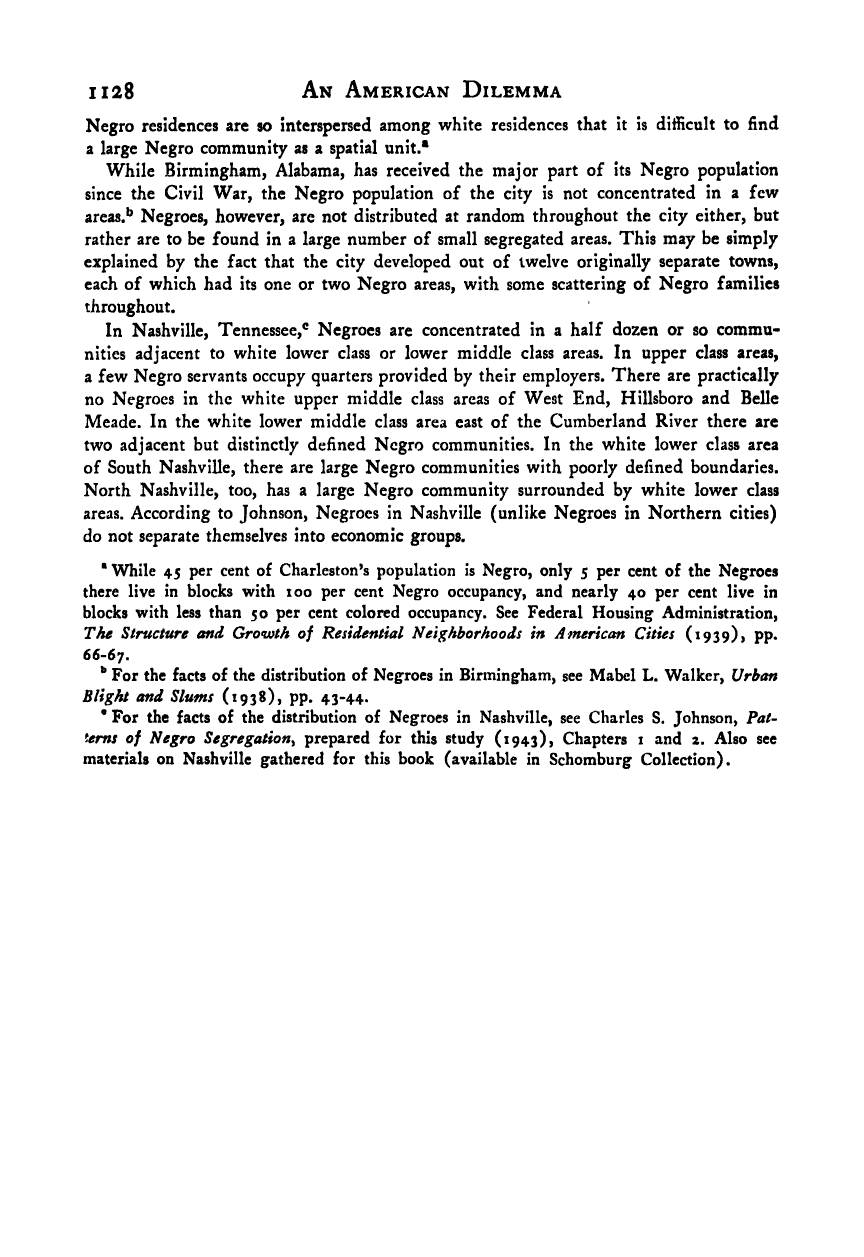Note: Gunnar Myrdal died in 1987, less than 70 years ago. Therefore, this work is protected by copyright, restricting your legal rights to reproduce it. However, you are welcome to view it on screen, as you do now. Read more about copyright.
Full resolution (TIFF) - On this page / på denna sida - Appendices - 7. Distribution of Negro Residences in Selected Cities

<< prev. page << föreg. sida << >> nästa sida >> next page >>
Below is the raw OCR text
from the above scanned image.
Do you see an error? Proofread the page now!
Här nedan syns maskintolkade texten från faksimilbilden ovan.
Ser du något fel? Korrekturläs sidan nu!
This page has never been proofread. / Denna sida har aldrig korrekturlästs.
1128 An American Dilemma
Negro residences are so interspersed among white residences that it is difficult to find
a large Negro community as a spatial unit.*
While Birmingham, Alabama, has received the major part of its Negro population
since the Civil War, the Negro population of the city is not concentrated in a few
areas.** Negroes, however, are not distributed at random throughout the city either, but
rather are to be found in a large number of small segregated areas. This may be simply
explained by the fact that the city developed out of twelve originally separate towns,
each of which had its one or two Negro areas, with some scattering of Negro families
throughout.
In Nashville, Tennessee,® Negroes are concentrated in a half dozen or so commu-
nities adjacent to white lower class or lower middle class areas. In upper class areas,
a few Negro servants occupy quarters provided by their employers. There are practically
no Negroes in the white upper middle class areas of West End, Hillsboro and Belle
Meade. In the white lower middle class area east of the Cumberland River there are
two adjacent but distinctly defined Negro communities. In the white lower class area
of South Nashville, there are large Negro communities with poorly defined boundaries.
North Nashville, too, has a large Negro community surrounded by white lower class
areas. According to Johnson, Negroes in Nashville (unlike Negroes in Northern cities)
do not separate themselves into economic groups.
While 45 per cent of Charleston’s population is Negro, only 5 per cent of the Negroes
there live in blocks with too per cent Negro occupancy, and nearly 40 per cent live in
blocks with less than 50 per cent colored occupancy. See Federal Housing Administration,
The Structure and. Growth of Residential Neighborhoods in American Cities (1939), pp.
66-67.
**
For the facts of the distribution of Negroes in Birmingham, see Mabel L. Walker, Urban
Blight and Slums (1938), pp. 43-44*
* For the facts of the distribution of Negroes in Nashville, see Charles S. Johnson, Fat-
tems of Negro Segregation^ prepared for this study (1943), Chapters i and 2. Also see
materials on Nashville gathered for this book (available in Schomburg Collection).
<< prev. page << föreg. sida << >> nästa sida >> next page >>